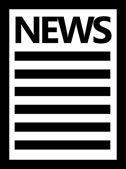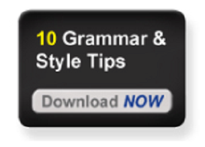 Journalists and bloggers are flooded with press releases. It’s not uncommon for some to receive dozens in a single day. Only a few press releases stand out from the swarm, and not all of those are eye-catching in a good way. How can you ensure that yours makes the right impact and helps you get the coverage you need?
Journalists and bloggers are flooded with press releases. It’s not uncommon for some to receive dozens in a single day. Only a few press releases stand out from the swarm, and not all of those are eye-catching in a good way. How can you ensure that yours makes the right impact and helps you get the coverage you need?
We asked writers and editors who cover many different industries to tell us how a press release can pique their interest – and what makes them dive for the “delete” key.
Just the right length: Try not to go beyond a single page, especially if there are no images to break up the text. Many editors take one look at a wall of densely packed paragraphs and immediately decide they don’t have the time or the inclination to dig through all of those words for the pertinent information. But don’t make the opposite mistake, either. A press release that doesn’t tell the reader enough is as frustrating as one that says far too much, writers say.
Contact information: Your press release is useless if you don’t tell the reader how to follow up. Include websites, email addresses and phone numbers for the relevant people and organizations. If listing multiple contacts, be clear about which person should be contacted for which reason. Make it as easy as possible for journalists to get in touch with the right contact if they have questions.
Check your links: Most press releases are sent via email, which means it’s very important to double-check every link before hitting “send.” If a writer clicks on your link and is taken to the wrong place, she might not have the time to hunt down the correct URL, particularly if the information is time-sensitive.
Don’t oversell it: Journalists have a nose for hyperbole. If your product really is the best thing since sliced bread, by all means, shout it from the rooftops! But those breakthroughs come along rarely, and you won’t do yourself any favors by trying to make a silk purse out of a sow’s ear. There’s only so much you can do to promote a new hire announcement or a product launch; don’t be tempted to overcompensate.
Know your limits: Nothing turns a writer off faster than someone who pushes too hard for coverage. There’s a difference between following up politely and borderline harassment. Badgering a writer or editor until they give up and cover your product just to get you off their case is often a recipe for negative press.
Build relationships, but don’t presume: Journalists appreciate having reliable sources. Cultivating a cordial relationship with writers and editors can boost your clients’ chances of receiving fair coverage. That said, when sending a press release to a journalist, don’t act as if there is a relationship where none exists. Writers tell us that overly casual messages from people they don’t know very well create unnecessary awkwardness. Unless you’re on a mutual first-name basis with the person to whom you’re sending the press release, skip the “Hi, Jane!” greeting in favor of something a bit more formal.
Use proper spelling and grammar: One thing we heard from just about every writer and editor we talked to was “please proofread your press releases!” To those who work with words for a living, typos and poor grammar are like nails on a chalkboard. They signal to the reader that the press release – and everyone associated with it – shouldn’t be taken seriously. If you don’t have a gift for grammar, hire someone who does. It’s a worthwhile investment, both for yourself and for those you represent.




